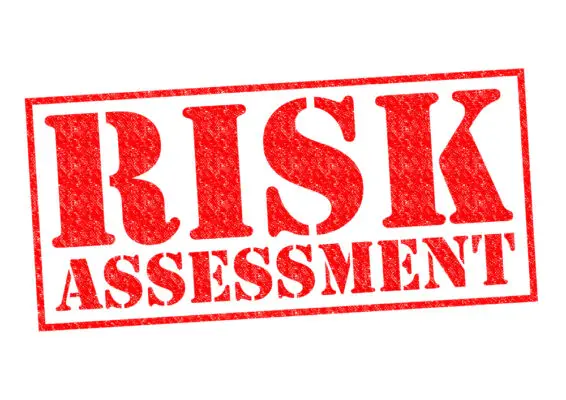A cybersecurity risk assessment is essential for organizations to identify and evaluate potential risks to their information systems and data. It systematically analyzes the vulnerabilities, threats, and potential impacts on the organization’s assets, including its technology infrastructure, data, and intellectual property.
To perform a cybersecurity risk assessment, organizations must follow a structured approach that includes the following:
– Identifying assets.
– Assessing vulnerabilities.
– Determining the likelihood and impact of threats.
– Implementing appropriate controls to mitigate the risks.
This process requires a deep understanding of the organization’s technology environment, industry regulations, and best practices in cybersecurity.
Conducting a cybersecurity risk assessment helps organizations proactively identify and address potential vulnerabilities, prevent security breaches, and protect sensitive information. Identifying and mitigating risks, organizations can enhance their security posture and minimize the potential impact of cyber threats.
Ideally, a cybersecurity risk assessment should be performed by a team of knowledgeable professionals who possess expertise in cybersecurity, risk management, and technology. Their objective and detail-oriented approach will comprehensively evaluate the organization’s security posture, leading to effective risk mitigation strategies.

What Is a Cybersecurity Risk Assessment?
A cybersecurity risk assessment is a systematic process that identifies, analyzes, and evaluates potential vulnerabilities in an organization’s digital infrastructure, aiming to determine the likelihood and potential impact of cyber threats.
This assessment helps organizations understand their exposure to potential risks and informs the development of effective security controls. A cybersecurity risk assessment can identify potential threats and vulnerabilities that malicious actors could exploit by examining the organization’s systems, networks, and data.
It enables organizations to prioritize their efforts and allocate resources to mitigate the most significant cybersecurity risks. The assessment evaluates the effectiveness of existing security controls and identifies areas where improvements are necessary.
Organizations can proactively identify and address vulnerabilities by conducting a comprehensive cybersecurity risk assessment, reducing the likelihood of a successful cyber attack.
What Does a Cybersecurity Risk Assessment Entail?
Conducting a comprehensive evaluation of potential vulnerabilities in an organization’s digital infrastructure is essential in ensuring robust cybersecurity measures.
A cybersecurity risk assessment entails identifying and assessing cyber risks that may impact an organization’s information systems and assets.
The risk assessment process involves the following:
– Identifying assets.
– Determining potential threats and vulnerabilities.
– Evaluating the potential impacts of these risks.
The goal is to prioritize risks based on their likelihood and potential impact and to assign risk levels accordingly.
Organizations can utilize various cybersecurity frameworks, such as NIST or ISO, which provide guidelines and standards for assessing and managing cyber risks to perform a cybersecurity risk assessment.
The assessment process typically involves the following:
– Creating a risk matrix, which maps the likelihood and impact of identified risks.
– Assessing the effectiveness of existing controls.
The ultimate aim is to identify and mitigate risks to an acceptable level, resulting in reduced residual risks and enhanced cybersecurity measures.
How Do You Perform a Cybersecurity Risk Assessment?
Performing a cybersecurity risk assessment involves several steps.
The first step is to catalog information assets, which includes identifying and documenting all the information that needs to be protected.
Next, the risk associated with each asset is assessed, considering the likelihood and impact of potential threats.
After assessing the risk, it is analyzed to understand the vulnerabilities and potential consequences.
Based on this analysis, security controls are set up to mitigate the identified risks.
Finally, the effectiveness of these security controls is monitored and reviewed regularly to ensure ongoing protection.

Step 1: Catalog Information Assets
To commence conducting a cybersecurity risk assessment, the first step involves cataloging the information assets within the organization.
This step is crucial as it enables organizations to identify and understand the scope of their assets, including data, systems, and networks.
Cataloging information assets involves creating a comprehensive inventory including asset types, locations, and owners.
This inventory provides a foundation for developing effective security policies and risk management strategies.
Cataloging information assets, organizations can prioritize critical assets and allocate resources for protection.
Furthermore, it allows for vulnerability assessments and cybersecurity threat assessments to be conducted more accurately.
This step also facilitates the integration of the organization’s security framework with other risk management processes, ensuring a holistic approach to cybersecurity risk assessments.
Step 2: Assess the Risk
Evaluating potential threats and vulnerabilities, organizations can gain a comprehensive understanding of the risks associated with their information assets. This step, known as assessing the risk, is crucial in the security risk assessment process. A thorough assessment allows organizations to determine their security posture and identify areas that require improvement.
This process involves analyzing the likelihood and impact of cyber threats on the organization’s information assets, such as data breaches or malware attacks. It also considers the potential reputational damage that could result from a cybersecurity incident.
To perform a comprehensive risk analysis, organizations typically utilize a risk model that incorporates various factors, including the organization’s existing security measures, the value of the information assets, and the likelihood of specific cybersecurity threats. This analytical and detail-oriented approach enables organizations to prioritize their cybersecurity efforts and allocate resources effectively.
Step 3: Analyze the Risk
Conducting a thorough analysis of the risks allows organizations to delve deeper into the intricate web of potential vulnerabilities and threats, unraveling the intricate details that could compromise their information assets.
This step involves evaluating the identified risks regarding their potential impact and likelihood of occurrence. Organizations should consider their risk tolerance levels and the potential harm each threat source could inflict on their technology assets. Organizations can prioritize their efforts and resources toward the most critical risks by adopting a risk-based approach.
This analysis should also consider the findings from previous risk assessment reports to identify any recurring issues or trends. Furthermore, organizations should determine the level of risk associated with each identified vulnerability and threat, allowing them to develop an appropriate risk mitigation strategy.
This analysis provides a detailed understanding of organizations’ risks, enabling them to make informed decisions regarding cybersecurity measures.
Step 4: Set Security Controls
Appropriate security controls are crucial in safeguarding an organization’s information assets and mitigating potential vulnerabilities and threats. In the context of cyber security risk analysis, security controls refer to the measures to protect against identified risks. These controls address specific risks within the organization’s risk environment.
It is essential to involve key stakeholders, such as risk owners, in setting security controls to ensure their effectiveness and alignment with the organization’s objectives. Technical security controls, such as firewalls, intrusion detection systems, and encryption protocols, are commonly employed to protect against cyber threats.
Control recommendations should be based on a comprehensive understanding of the identified risks and their potential impacts. Implementing appropriate security controls, organizations can enhance their overall security posture and reduce the likelihood and impact of cyber attacks.
Step 5: Monitor and Review the Effectiveness
In the previous cybersecurity risk assessment process step, security controls were established to mitigate identified risks. Now, in the fifth step, the focus shifts to monitoring and reviewing the effectiveness of these controls.
This step is crucial for ensuring the cybersecurity program remains robust and aligned with the evolving threat landscape. Continuous monitoring allows organizations to detect and promptly address potential vulnerabilities or weaknesses in their systems.
By regularly reviewing the effectiveness of security controls, organizations can identify any gaps or areas for improvement and make necessary adjustments to enhance the overall security posture.
This ongoing evaluation helps safeguard organizational operations and ensures that cybersecurity measures remain effective in protecting against emerging threats in everyday operations.
Why Perform a Cyber Risk Assessment?
A cyber risk assessment is crucial to identify and understand potential vulnerabilities and threats to an organization’s digital assets. This enables the implementation of effective security measures to mitigate the risks involved.
This assessment helps organizations meet compliance requirements and adopt a risk-based approach to cybersecurity. The security team can identify and prioritize risks by conducting a thorough analysis, ensuring that resources are allocated appropriately.
Additionally, the cyber risk assessment provides valuable insights into the potential business impacts of a security breach, allowing organizations to develop a comprehensive cybersecurity strategy. The assessment also plays a key role in risk management programs, providing a clear understanding of an organization’s current security posture and helping identify improvement areas.
Ultimately, a cybersecurity risk assessment report is a valuable tool for organizations to enhance their security measures and protect their digital assets.

Who Should Perform a Cyber Risk Assessment?
Conducting a comprehensive analysis of potential vulnerabilities and threats to an organization’s digital assets necessitates the involvement of knowledgeable and skilled professionals. It is crucial to have a team of experts who deeply understand cybersecurity principles, risk assessment methodologies, and industry best practices.
These professionals should be well-versed in security assessments and possess the technical expertise to identify and assess potential risks. Additionally, they should clearly understand the organization’s business objectives and be able to align the risk assessment process with these objectives.
The responsibility of performing a cyber risk assessment typically lies with senior management, who can ensure the assessment is conducted using a risk-based approach. This approach involves identifying and prioritizing potential risks based on their likelihood and potential financial impacts.
Organizations can effectively identify and mitigate potential cyber risks by involving the appropriate professionals and aligning the assessment with business objectives.
Frequently Asked Questions
What are the common cybersecurity risks that organizations face today?
Common cybersecurity risks organizations face today include data breaches, phishing attacks, ransomware, insider threats, and third-party vulnerabilities. These risks can result in financial losses, reputational damage, legal consequences, and disruption of operations. Organizations must implement robust security measures to mitigate these risks.
What are the key components of a comprehensive cybersecurity risk assessment framework?
A comprehensive cybersecurity risk assessment framework consists of several key components, including identification of assets, threat analysis, vulnerability assessment, likelihood determination, impact analysis, risk calculation, and risk mitigation strategies.
How often should a cybersecurity risk assessment be conducted?
Cybersecurity risk assessments should be conducted regularly to ensure ongoing protection. The frequency of assessments may vary depending on factors such as industry regulations, organizational changes, emerging threats, and technology advancements.
What are the legal and regulatory requirements for conducting a cybersecurity risk assessment?
Legal and regulatory requirements for cybersecurity risk assessment vary depending on the industry, jurisdiction, and specific circumstances. Organizations should consult relevant laws, regulations, and industry standards to ensure compliance and mitigate potential legal and financial risks.
What are some common challenges organizations face when conducting a cybersecurity risk assessment?
Organizations’ Common challenges when conducting a cybersecurity risk assessment include a lack of skilled personnel, limited resources, complex and evolving threats, difficulty in assessing third-party risks, and the need to balance security measures with business objectives.

Conclusion
A cybersecurity risk assessment is a crucial step in ensuring the security of an organization’s digital assets. It involves identifying potential vulnerabilities and threats, assessing the potential impact of these risks, and implementing appropriate security measures.
To perform a cybersecurity risk assessment, organizations should follow a systematic approach that includes the following:
– Identifying assets.
– Evaluating threats.
– Assessing vulnerabilities.
– Determining the potential impact.
It is important to perform a cyber risk assessment to:
– Protect sensitive data.
– Prevent financial losses.
– Maintain regulatory compliance.
– Safeguard reputation.
Cyber risk assessments should be performed by trained professionals with extensive knowledge and expertise in cybersecurity.
A cybersecurity risk assessment is essential for organizations to identify and address potential threats and vulnerabilities, ensuring the protection of their digital assets.

Chris Ekai is a Risk Management expert with over 10 years of experience in the field. He has a Master’s(MSc) degree in Risk Management from University of Portsmouth and is a CPA and Finance professional. He currently works as a Content Manager at Risk Publishing, writing about Enterprise Risk Management, Business Continuity Management and Project Management.

